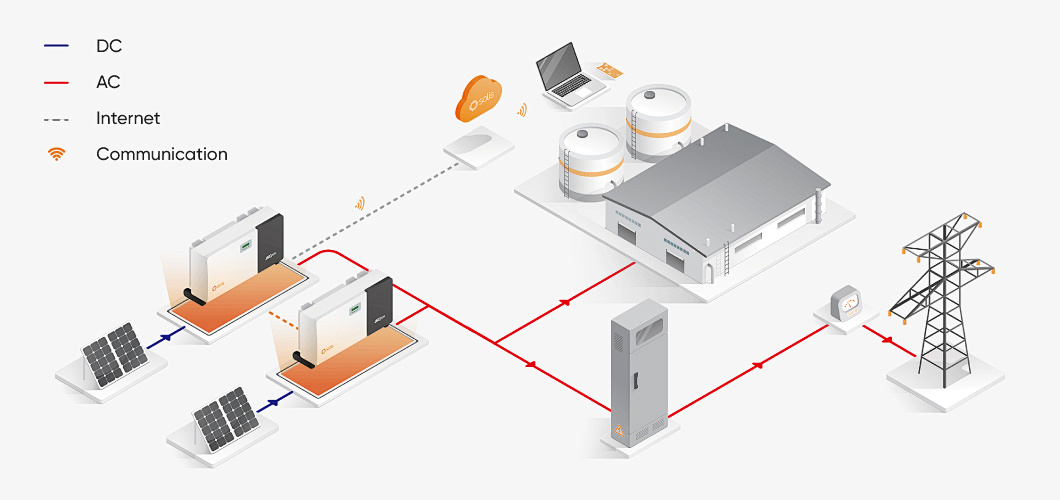
Introduction to grid-connected systems
A grid-connected system is a power solution that uses distributed power sources (e.g. photovoltaic (PV) modules, wind turbines, etc.) to generate electricity and then converts the DC power into AC power that meets the national grid standards through an inverter and connects it to the public power grid.The system can satisfy both self-generation and self-consumption, as well as selling the excess power online, realising the effective use of clean energy and revenue transformation.
Illustrative structure description
Solar modules/wind turbines
↓ (DC)
Grid-connected inverters
↓ (AC)
Grid-connected controllers
↓
Distribution cabinets/energy meters
↓
Grids
Introduction to Key Components
-
Power generation units (e.g. photovoltaic modules/turbines):
Responsible for converting natural energy sources (sunlight, wind) into electricity. -
Inverter (Grid-tied Inverter):
Converts direct current to alternating current and ensures that the output power is consistent with the grid voltage and frequency. -
Grid-connected controllers:
Real-time monitoring of the system's operating status, coordination of power flow, and guarantee of grid-connected safety. -
Electrical distribution equipment (switchboards/meters):
Realise functions such as power distribution, isolation and power metering to meet grid access specifications. -
Monitoring system:
Provide intelligent O&M support such as remote monitoring, fault alarms and energy efficiency analysis.
System advantages
✅ Energy saving and environmental protection: utilising renewable energy sources and reducing carbon emissions
✅ Economic Benefits: Excess power can be sold to the grid for a profit
✅ Stable operation: mature technology, strong compatibility, easy maintenance
✅ Highly intelligent: remote monitoring, automatic switching on and off the grid
System disadvantages
⚠️ High grid dependence: Grid-connected systems usually stop supplying electricity during power outages (unless equipped with an energy storage system).
⚠️ Large initial investment: especially in large-scale projects
⚠️ Grid connection standards to be met: need to be audited by the power grid company, in line with the power access norms


